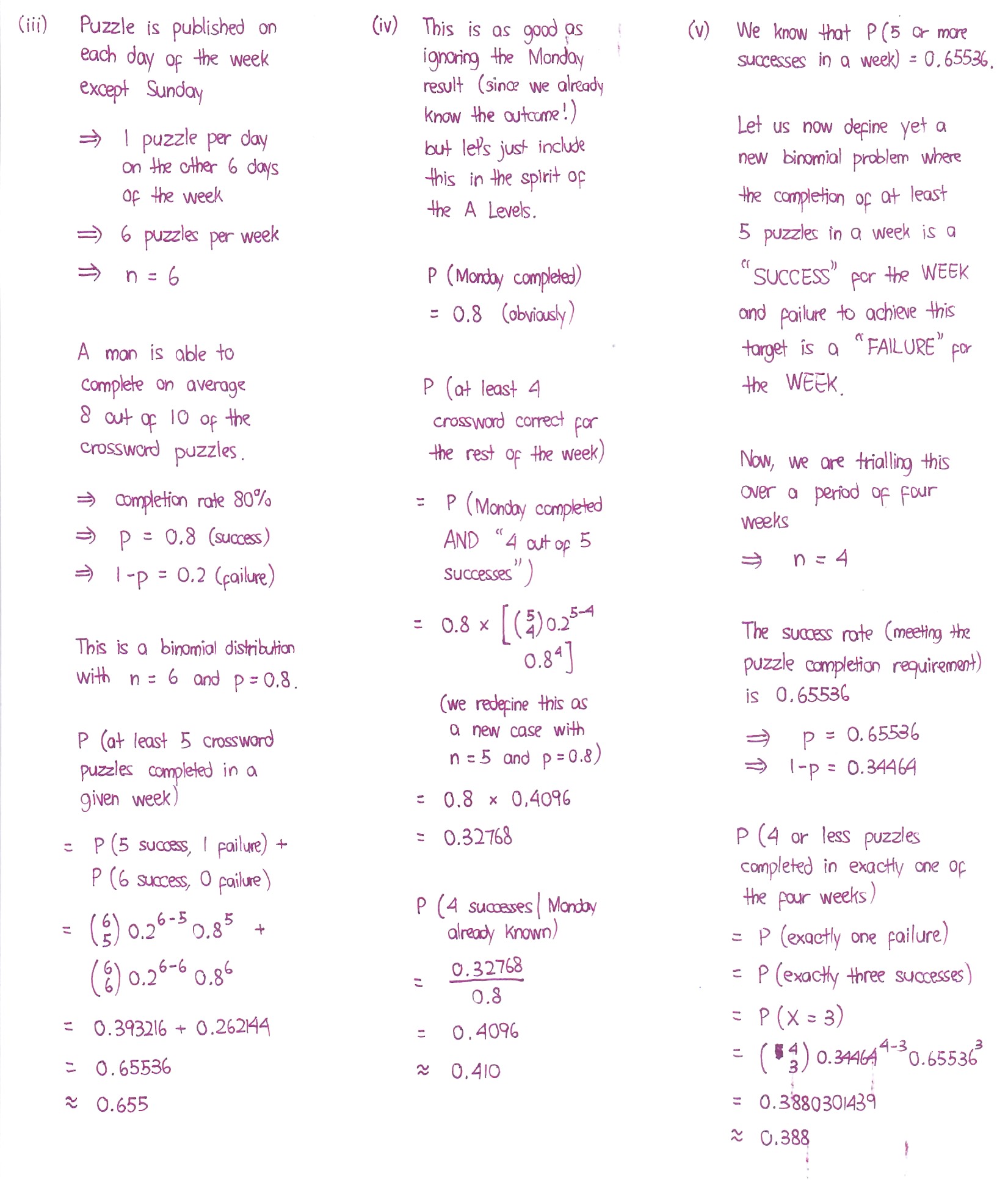Eric Nicholas K's answer to Xiang Ning's Junior College 2 H2 Maths Singapore question.
done
2 Upvotes
clear 0 Downvotes
Not 100% sure. My answers are likely wrong.
For part ii, we simply model the binomial distribution by n = 6, p = 0.8 and 1 - p = 0.2, then the general term in the expansion of the binomial formula will be like
(6 r) * 0.2^(6 - r) * 0.8^r
We just sub in integer values of r from 0 to 6 and see the highest one for the most likely integer number of puzzles completed. Of course, adding the probability values for the seven cases must get you 1.
For part ii, we simply model the binomial distribution by n = 6, p = 0.8 and 1 - p = 0.2, then the general term in the expansion of the binomial formula will be like
(6 r) * 0.2^(6 - r) * 0.8^r
We just sub in integer values of r from 0 to 6 and see the highest one for the most likely integer number of puzzles completed. Of course, adding the probability values for the seven cases must get you 1.
Date Posted:
5 years ago



In other words, you must do the 5C5 case in my working for part iv in which I only wrote 5C4.
Wait while I update this around 2 am.